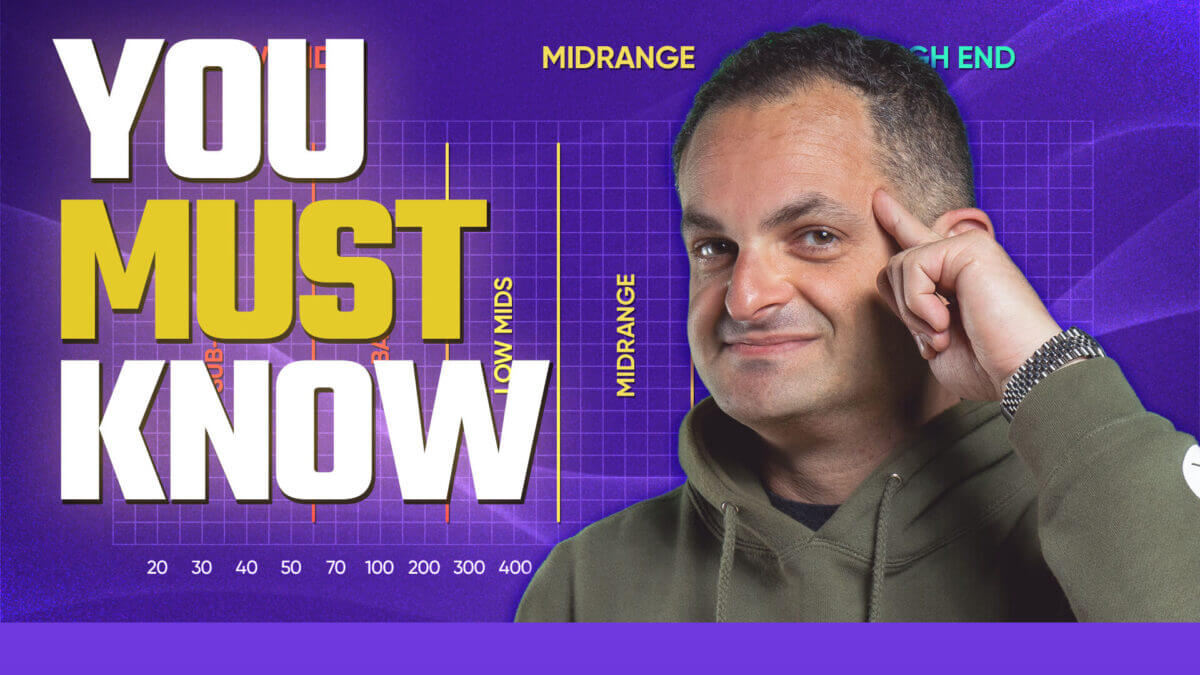
7 Frequency Ranges You Must Know
In this week’s blog post, we’re diving into a crucial topic for any music producer: frequency ranges. Understanding and mastering these seven key frequency bands will elevate your skills in EQ and overall music production. Let’s break down each frequency range and explore its significance in creating a balanced and professional mix.
What are Frequency Ranges and the Range of Human Hearing
Before we delve into the specifics, it’s essential to understand what frequency ranges are and how they relate to human hearing. The human ear can detect sounds from approximately 20 Hz to 20,000 Hz (20 kHz). This spectrum is divided into different bands, each with its characteristics and impact on a mix.
1. Sub Bass Region
The sub-bass region ranges from 20 Hz to around 60 Hz. This area provides the deep, rumbling low-end that you feel more than you hear. Sub-bass is crucial for genres like hip-hop, EDM, and dubstep, where a powerful low-end presence is essential. However, too much sub-bass can muddy your mix, so it’s vital to balance it correctly.
2. Bass Region
The bass region spans from 60 Hz to 250 Hz. This range includes the fundamental frequencies of bass instruments and kick drums. Properly managing the bass region is key to achieving a punchy and full-sounding mix. It’s also where the warmth and body of the sound reside, contributing significantly to the overall energy of the track.
3. Low Mids Region
The low mids range from 250 Hz to 500 Hz. This area can add weight and fullness to instruments and vocals. However, it’s also prone to muddiness, especially when multiple elements compete for space. Carefully EQing the low mids can help clear up a congested mix and provide clarity to individual tracks.
4. Midrange Region
The midrange spans from 500 Hz to 2 kHz. This is where much of the harmonic content of most instruments and vocals lies. The midrange is crucial for intelligibility and presence. Ensuring a balanced midrange can make your mix sound clear and focused, as this range is where our ears are most sensitive.
5. Hi Mids Region
The hi mids cover the range from 2 kHz to 4 kHz. This area adds definition and attack to instruments and vocals. It’s where the presence of vocals, guitars, and snare drums can be enhanced. However, excessive hi-mids can lead to harshness and listener fatigue, so they must be managed with care.
6. Presence Region
The presence region ranges from 4 kHz to 6 kHz. This range adds sparkle and sheen to your mix, giving it a sense of air and openness. Cymbals, hi-hats, and the upper harmonics of vocals and instruments reside here. Properly boosting the presence region can make your mix sound more lively and polished.
7. Brilliance Region
The brilliance region spans from 6 kHz to 16 kHz (and up to 20 kHz). This area contributes to the brightness and clarity of a mix. It’s where the highest harmonics and overtones are found, adding a sense of space and detail. While boosting this range can add shine, it’s important not to overdo it, as it can introduce unwanted noise and sibilance.
Mastering these seven frequency ranges is essential for any music producer aiming to create professional-sounding mixes. By understanding how each band affects your mix and learning to balance them effectively, you can ensure that your tracks have clarity, depth, and impact. Whether you’re working on a sub-heavy EDM track or a vocal-centric pop song, knowing how to manipulate these frequency ranges will give you the tools you need to achieve your desired sound.
Thanks for watching this video on frequency ranges you must know! Make sure to subscribe on YouTube for weekly tips and tricks.
